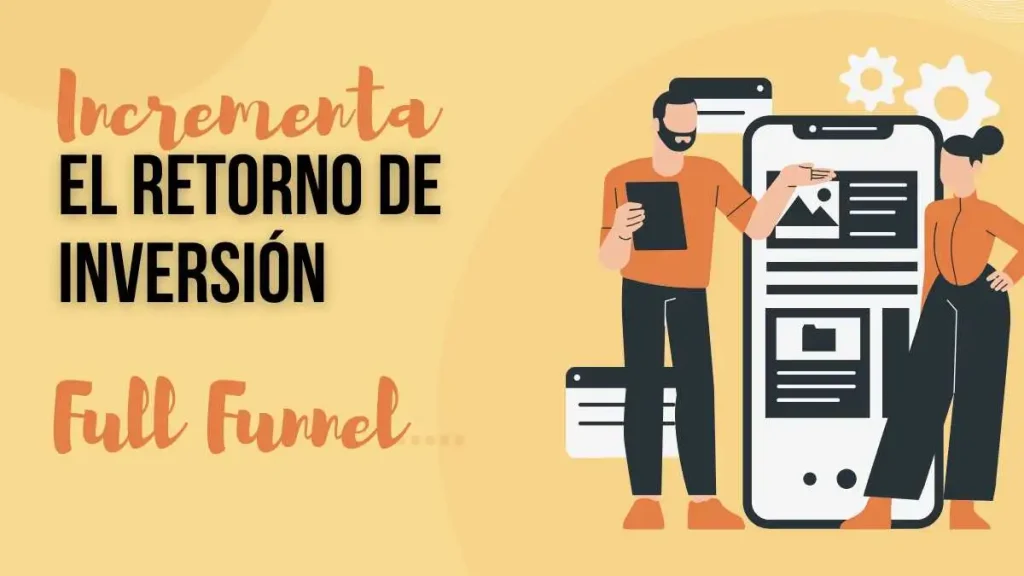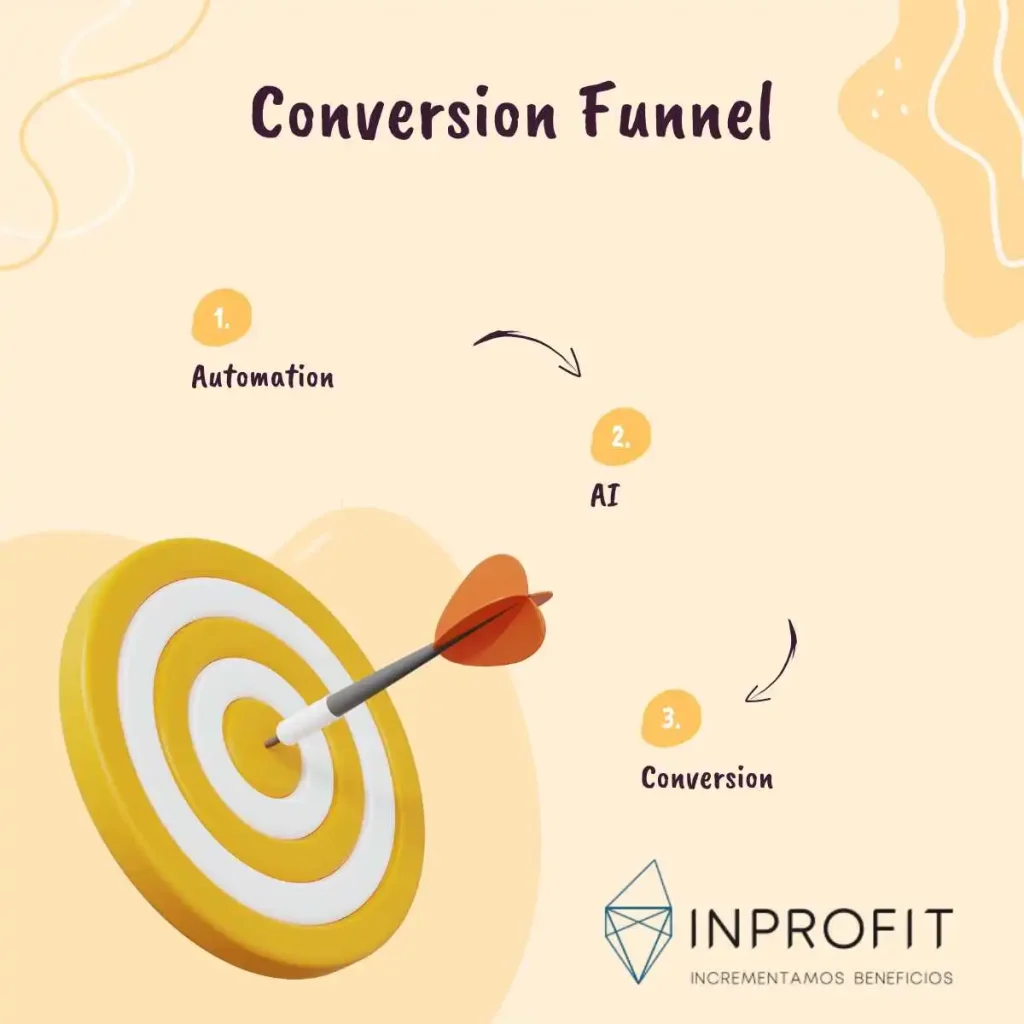Conversion funnels have long been the backbone of sales strategies. However, with the advent of web automation and artificial intelligence (AI), these funnels have evolved significantly, offering new opportunities and challenges for marketers.
The basis of conversion funnels
A traditional conversion funnel is composed of several stages: awareness, interest, consideration, intent and purchase. Each stage is designed to guide the potential customer through the sales process, from first contact to final conversion. However, in an increasingly complex digital environment, traditional funnels may be insufficient to capture and retain consumers’ attention.
Web automation: Optimizing funnel flow
Web automation has revolutionized the way marketers manage conversion funnels. By automating repetitive tasks and manual processes, such as audience segmentation, emailing and lead tracking, marketing teams can focus on more complex and creative strategies.
Dynamic segmentation and personalization
One of the key advantages of web automation is the ability to segment audiences in real time. Using behavioral data, such as pages visited, time on site and actions taken, automation systems can classify leads into different segments and personalize the content they receive. This not only improves the user experience, but also increases conversion rates by delivering more relevant messages at each stage of the funnel.
Lead Scoring: Lead Nurturing
Lead scoring is a technique that assigns a numerical value to each lead based on its behavior and level of engagement. By combining this technique with lead nurturing, marketers can identify the most qualified leads and send them targeted content to move up the funnel. Web automation allows this process to be continuous and scalable, ensuring that no lead is left behind.
Artificial Intelligence: The Future of Conversion Funnels
Artificial intelligence is taking conversion funnel optimization to a whole new level. By analyzing large volumes of data and predicting future behavior, AI enables marketers to make more informed and accurate decisions.
Predictive analytics
One of the most powerful applications of AI in conversion funnels is predictive analytics. By using machine learning algorithms, AI systems can predict which leads are most likely to convert into customers and at what point in time. This allows marketing teams to focus their efforts on the most promising leads and design campaigns that anticipate customer needs.
Chatbots
AI-powered chatbots and virtual assistants are transforming the way companies interact with potential customers. These systems can answer questions, offer recommendations and guide users through the conversion funnel in real time. In addition, by collecting data from these interactions, chatbots can continuously improve their ability to provide accurate and relevant responses.
Automated content optimization
AI is also revolutionizing content creation and optimization. By analyzing the performance of different types of content, such as blogs, videos and ads, AI systems can identify which elements work best for each audience segment. In addition, automated A/B testing allows marketers to test multiple content variants and automatically select the most effective one.
Integration of web automation and AI in sales
The true power of these technologies lies in their integration. By combining web automation with artificial intelligence, marketers can create highly efficient and personalized sales funnels.
Intelligent workflows use real-time data to automatically adjust marketing strategies. For example, if a lead shows a particular interest in a product, the system can automatically send related content and special offers. This level of personalization not only improves the customer experience, but also increases the chances of conversion.

b. Customer Life Cycle Analysis
AI can also analyze the entire customer lifecycle, from first interaction to purchase and beyond. This allows marketers to identify patterns and trends that can be used to optimize each stage of the funnel. For example, if data shows that customers tend to abandon the shopping cart at a specific stage, the system can automatically send a reminder or special offer to incentivize them to complete the purchase.
c. Post-Sales Automation
Automation and AI are not only limited to the customer acquisition phase. They can also be used to improve the post-sales experience and foster loyalty. By sending satisfaction surveys, offering complementary product recommendations and managing loyalty programs, companies can keep customers engaged and increase their lifetime value.
How to have an optimized sales funnel?
a. Hyper-Segmented Personalization
Personalization is no longer an option, but a necessity in modern marketing. With the help of AI, marketers can take personalization to a hyper-segmented level. This involves creating specific messages and offers for each individual based on their behavior, preferences and purchase history. For example, if a customer has been searching for specific products on your website, AI can automatically generate an email with personalized recommendations and exclusive discounts.
b. Automation of Retargeting
Retargeting is a powerful technique to win back customers who abandoned the conversion funnel. With web automation and AI, retargeting becomes more effective and efficient. Systems can identify users who abandoned the shopping cart or visited certain pages and send them personalized ads on different platforms. In addition, AI can optimize the timing and frequency of these ads to maximize the chances of re-engagement.
c. Omnichannel Integration
Modern consumers interact with brands through multiple channels, such as social media, email, websites and mobile apps. Omnichannel integration is essential to creating a consistent and seamless customer experience. Web automation and AI enable marketers to synchronize interactions across all channels, ensuring messages are consistent and relevant at every touchpoint.
d. Real-time Feedback and Sentiment Analysis
AI can also be used to analyze customer sentiment in real time. By monitoring social media, reviews and feedback, AI systems can identify trends and issues before they become crises. This allows marketing teams to respond quickly and adjust their strategies to improve customer satisfaction.
Full funnel: The future of conversion
The future of sales funnels lies in the continuous integration of advanced technologies. As AI and web automation evolve, marketers will have access to even more sophisticated tools to optimize their strategies across the entire customer journey, applying specific strategies for any point in the full funnel. From augmented reality to real-time predictive analytics, the possibilities are endless.
Immersive Experiences
Augmented reality (AR) is beginning to play an important role in sales funnels. By allowing customers to visualize products in their actual environment before they buy, AR can reduce uncertainty and increase conversion rates. For example, a furniture company could use AR to show how a sofa would look in a customer’s living room.
Real-time predictive analytics
In the future, predictive analytics will become even more accurate and real-time. AI systems will be able to predict customer behavior with near-perfect accuracy, allowing marketers to adjust their strategies at exactly the right time. This could include dynamic pricing changes, personalized offers and adaptive content.
IoT (Internet of Things) Integration
The Internet of Things (IoT) will also have a significant impact on sales funnels. By connecting smart devices, such as wearables and home appliances, companies will be able to collect additional data on customer behavior and deliver more personalized experiences.
For example, an appliance manufacturer might use usage data to provide preventive maintenance or product recommendations.
Conclusion
The combination of conversion funnels, web automation and artificial intelligence is redefining the digital marketing landscape.
For marketers, this represents a unique opportunity to optimize their sales strategies and deliver exceptional customer experiences. However, it is also crucial to address the ethical and technical challenges that arise with these technologies.
By taking a balanced, customer-centric approach, marketers can take full advantage of these tools and stay ahead of the curve in a competitive and constantly evolving environment.
Do you want to start optimizing your conversion funnel? Contact Inprofit.




